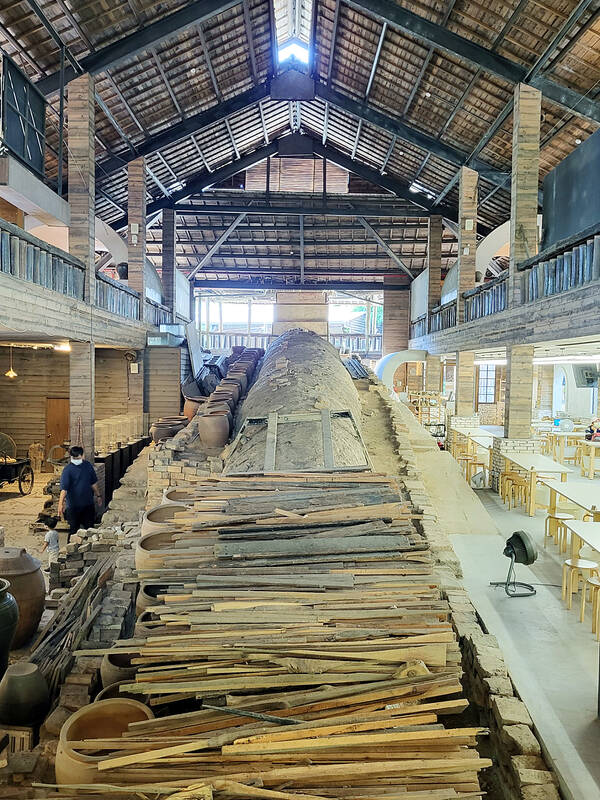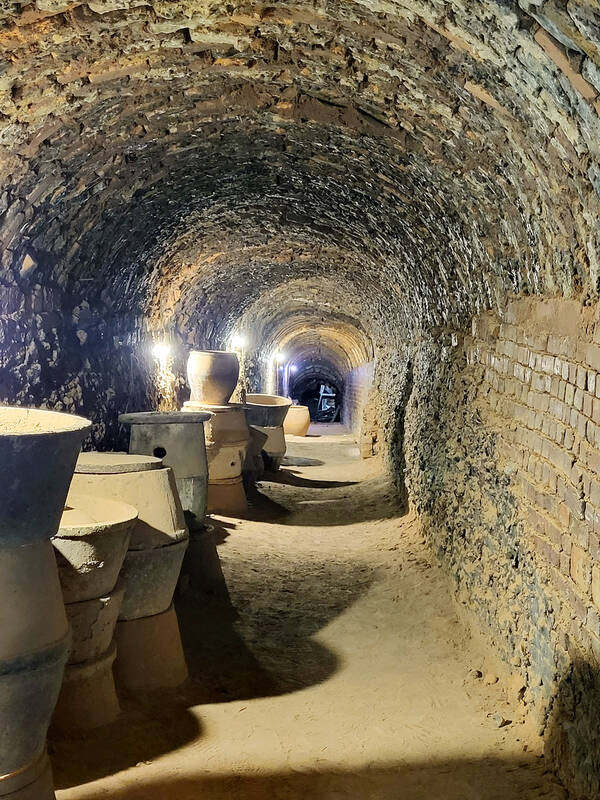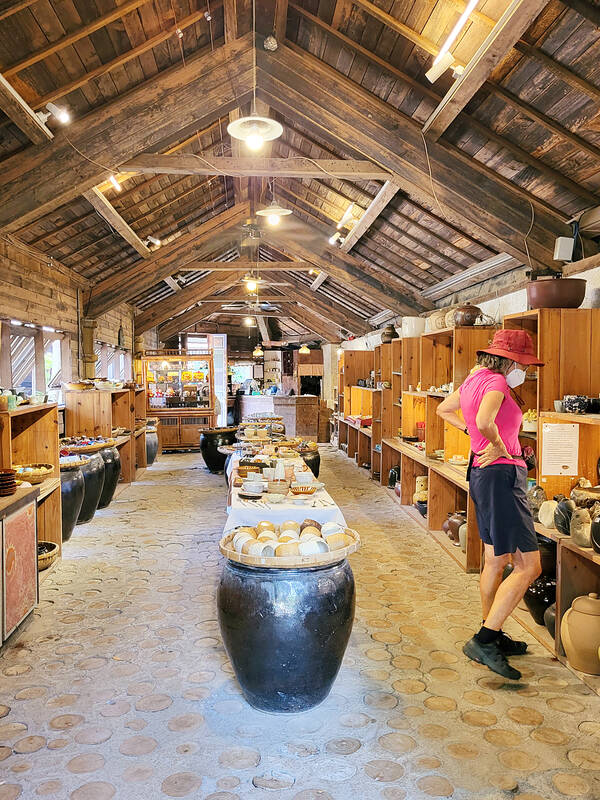This is a tourist attraction that I have passed too many times to remember, but only visited recently. I was pleasantly surprised by what greeted me inside, but a more accurate description would be that I was shocked it doesn’t receive the attention it truly deserves.
Shueili Snake Kiln Ceramics Cultural Park (水里蛇窯陶藝文化園區) in Nantou County’s Shueili Township (水里) was built in 1927 and is the oldest wood-fired kiln in Taiwan. Founded in 1927 by master potter Lin Chiang-sung (林江松) it remained a family business for generations before being opened to the public as a ceramics park in 1993. The 30-meter elongated kiln bears a resemblance to a snake, hence its name.
There were two reasons for founding a kiln in this location. First, in the early 20th century Shueili was home to a thriving timber industry providing an ample supply of wood to fire the kiln. Second, the local clay is ideal for pottery.

Photo courtesy of Mark Roche
After passing through the gateway the first thing that caught my eye was the three-story main building. It was like stepping into the Japanese colonial past. Ceramic jars line the outer walls of the wooden structure carved and assembled by artisans of a bygone era. Even more impressive is the fact that the whole complex had to be reconstructed from scratch.
RISING FROM THE RUBBLE
In 1999, the original kiln was completely destroyed by the catastrophic 921 Earthquake. The next year, it was fully restored and opened to the public. To celebrate its rebirth, potters created a 6.6-meter vase –—The Millenium Twin-lips Vase — certified as the tallest kiln work in the world by Guinness World Records.

Photo courtesy of Mark Roche
Shueili Snake Kiln also successfully transformed itself into a cultural park, where the family-friendly, educational and interactive pottery classes allow visitors to experience traditional clay making.
LOST IN THE LABYRINTH
I stood inside the 30-meter Snake Kiln in awe of the effort required to stack and fire its contents. Watching artisans transform a lump of clay into objects of beauty gave me extra appreciation when wandering through the gallery spaces, where traditional forms and contemporary designs contrast with more playful work.

Photo courtesy of Mark Roche
Walking around the cultural park is a sheer joy. A maze of rooms, one leading into the other includes the Snake Kiln Museum, a multi-media room, an exhibition hall and a boutique shop to name a few. If you can find it without getting lost there is also a wonderful coffee shop on one of the upper floors.
I would advise the visitor to allow a few hours to cover all the areas inside. It would be a mistake to rush it if for no other reason than to just sit in the garden area and soak in the atmosphere of this temple dedicated to the art of ceramics.

Photo courtesy of Mark Roche

This month the government ordered a one-year block of Xiaohongshu (小紅書) or Rednote, a Chinese social media platform with more than 3 million users in Taiwan. The government pointed to widespread fraud activity on the platform, along with cybersecurity failures. Officials said that they had reached out to the company and asked it to change. However, they received no response. The pro-China parties, the Chinese Nationalist Party (KMT) and Taiwan People’s Party (TPP), immediately swung into action, denouncing the ban as an attack on free speech. This “free speech” claim was then echoed by the People’s Republic of China (PRC),

Exceptions to the rule are sometimes revealing. For a brief few years, there was an emerging ideological split between the Democratic Progressive Party (DPP) and Chinese Nationalist Party (KMT) that appeared to be pushing the DPP in a direction that would be considered more liberal, and the KMT more conservative. In the previous column, “The KMT-DPP’s bureaucrat-led developmental state” (Dec. 11, page 12), we examined how Taiwan’s democratic system developed, and how both the two main parties largely accepted a similar consensus on how Taiwan should be run domestically and did not split along the left-right lines more familiar in

Many people in Taiwan first learned about universal basic income (UBI) — the idea that the government should provide regular, no-strings-attached payments to each citizen — in 2019. While seeking the Democratic nomination for the 2020 US presidential election, Andrew Yang, a politician of Taiwanese descent, said that, if elected, he’d institute a UBI of US$1,000 per month to “get the economic boot off of people’s throats, allowing them to lift their heads up, breathe, and get excited for the future.” His campaign petered out, but the concept of UBI hasn’t gone away. Throughout the industrialized world, there are fears that

The Democratic Progressive Party (DPP) controlled Executive Yuan (often called the Cabinet) finally fired back at the opposition-controlled Legislative Yuan in their ongoing struggle for control. The opposition Chinese Nationalist Party (KMT) and Taiwan People’s Party (TPP) acted surprised and outraged, but they should have seen it coming. Taiwan is now in a full-blown constitutional crisis. There are still peaceful ways out of this conflict, but with the KMT and TPP leadership in the hands of hardliners and the DPP having lost all patience, there is an alarming chance things could spiral out of control, threatening Taiwan’s democracy. This is no